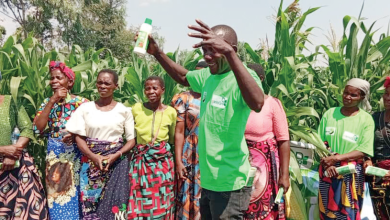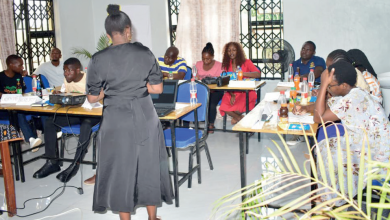Kayelekera Mine gets environmental clearance
Malawi Environment and Protection Authority (Mepa) has approved the environmental and social impact assessment (ESIA), effectively giving Lotus Resources Limited approval to restart operations at Kayelekera Uranium Mine in Karonga.
But, despite the Mepa seal of approval, environmentalists have urged caution.
In an announcement yesterday, Lotus Resources said the approval is subject to compliance with the measures outlined in the Environmental and Social Management Plan of the ESIA Report as well as other relevant legislation applicable to the project and conditions to be outlined in the ESIA certificate.

the capacity. | Nation
Reads the statement announcing the development: “The ESIA seeks to ensure that adequate and early information is obtained on any likely environmental impacts and on measures to mitigate these impacts.
“This approval provides a clear regulatory pathway for the restart of uranium production at Kayelekera in Q3 2025, with the focus now on finalising preparations.”
Lotus Resources managing director Greg Bittar, in an interview yesterday, said they have worked constructively with Mepa and that the approval is a critical milestone.
He said: “We look forward to working with Mepa to finalise issuing of the ESIA certificate for the restart of Kayelekera production.
“We will continue to work closely with Mepa and all stakeholders as Kayelekera operations recommence. Our top priority is to provide an ongoing safe and secure operation for our onsite team, the local communities and the environment.”
In an interview yesterday, mining expert Grain Malunga, who has closely been involved on the restart of the mine, said the approval means Lotus Resources can now finalise the aspects of production.
“Any mining project has to be taken with care and consideration to make sure that all stakeholders are properly served and protected. The ESIA is very important, and even Lotus has received approval for mining and processing of radio-active material,” he said.
But in a separate interview, Malawi University of Business and Applied Sciences associate professor of environmental health Save Kumwenda said while there is good regulatory framework, Mepa lacks capacity in terms of monitoring.
He said: “The challenge is that Mepa lacks capacity in terms of officers to do enforcement. We need environmental officers at district level, resources for site visits and also the capacity to have their decisions taken seriously.
“Last time it was difficult for people to get into the mine site, maybe taking even two hours. Will that change now? If there is suspected leakage, will they be allowing inspectors to get into the mine quickly this time?”
Kumwenda also urged Lotus Resources to work with community initiatives to address any emerging issues related to the environment.
In April this year, Lotus Resources announced that it had been rapidly advancing with the updated ESIA for restarting mining at Kayelekera.
During a visit to Kayelekera last month, Minister of Mining Ken Zikhale Ng’oma could not hide his surprise that the mine was such a big venture from which Malawi could have been making money from.
He said: “I am happy because Lotus is ahead of time, and about to roll out soon. This is a good sign that Malawi is taking mining seriously because three other companies are coming to start production.
“From September to December, we should be having some earnings from mining which will be a paradigm shift for Malawi’s economy. On the containers and vehicles, I will engage the Malawi Revenue Authority to release the consignments as soon as possible.”
Ahead of the restart, Lotus Resources has signed several off-take agreements, including a four-year binding contract in March 2025 for the sale and purchase of 600 000 pounds (about 272 000 kilogrammes) of Kayelekera uranium with an American power utility company.
Kayelekera is one of the three mining projects expected to roll out in 2025. The others are the Kanyika Niobium Mine in Mzimba and the Kangankunde Rare Earth Project in Balaka. The projects are projected to significantly contribute to Malawi’s economy, potentially raising the mining sector’s contribution to gross domestic product by 12 percent by 2027.
Mining alongside agriculture, tourism and manufacturing are touted as key drivers to spur Malawi’s economic growth under the ATM+M strategy.





